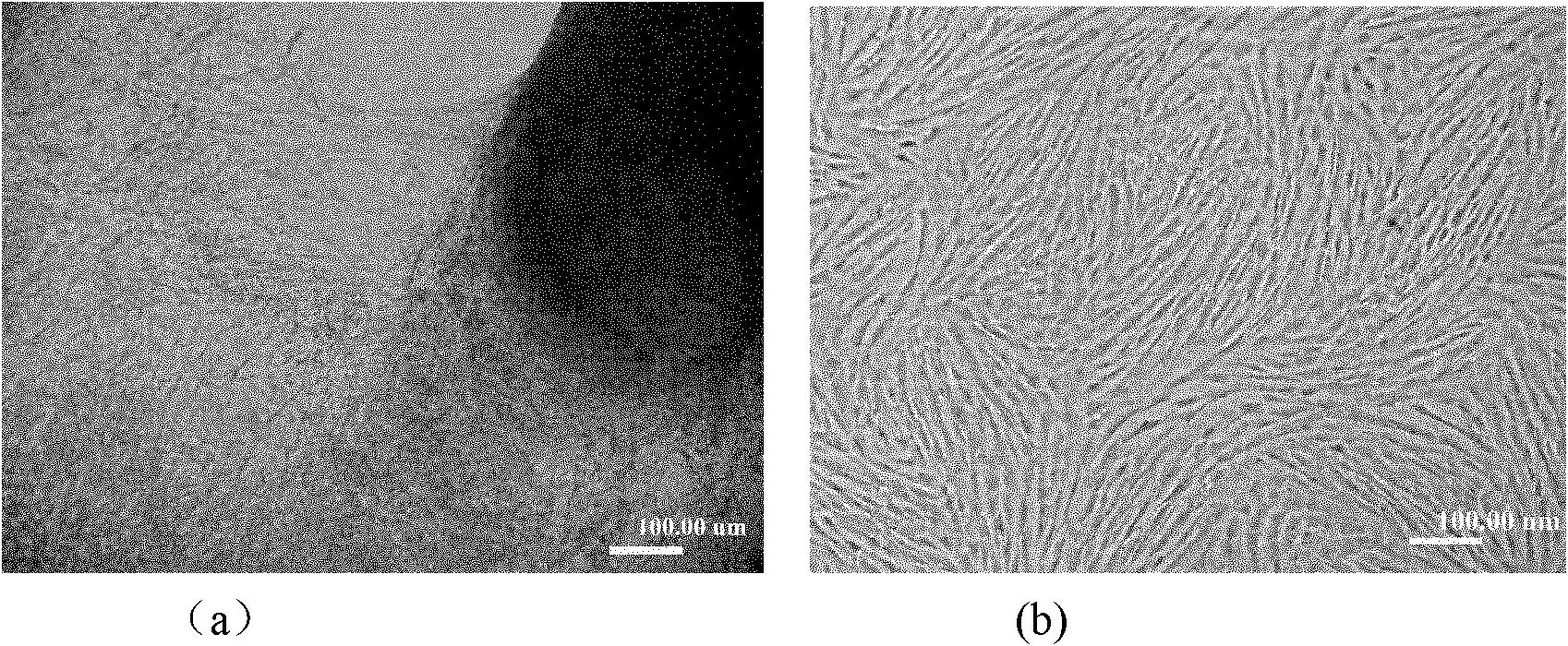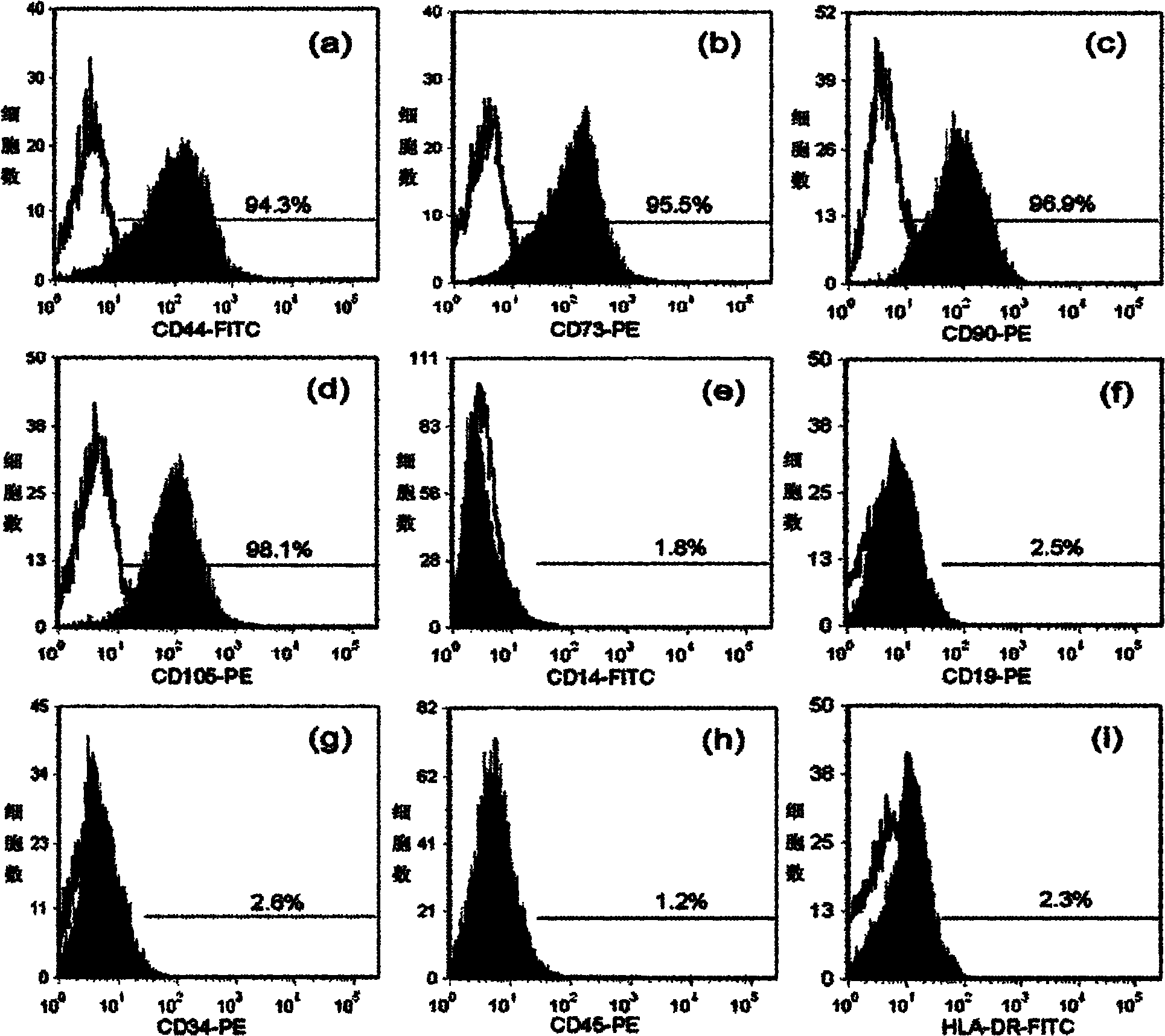Method and application for inducing human umbilical cord mesenchyme stem cells to be differentiated into testicular interstitial cells
A technology for Leydig cells and Leydig stem cells is applied in the field of inducing human umbilical cord mesenchymal stem cells to differentiate into Leydig cells. Efficiency, the effect of good testosterone secretion capacity
- Summary
- Abstract
- Description
- Claims
- Application Information
AI Technical Summary
Problems solved by technology
Method used
Image
Examples
Embodiment 1
[0038] Example 1 Isolation and Expansion of Human Umbilical Cord Mesenchymal Stem Cells
[0039] Tissue block adherent separation method was used. Obtain the umbilical cord under sterile conditions, soak it in 0.25% iodophor for 3 minutes for disinfection, rinse with normal saline, remove the surface of the umbilical cord and blood clots in the blood vessel, cut the umbilical cord, tear off the Wharton's Jelly around the blood vessel wall with tweezers, Cut it into 1.5~2.5mm 3 The size of the tissue block was placed in a 24-well plate, and 800ml of culture medium was added (the composition of the culture medium was 10% (v / v) fetal bovine serum (FBS), 5ng / ml bFGF, 216μg / ml glutamate, 2mg / ml NaHCO 3 , 100U / ml penicillin, 100μg / ml streptomycin and 1μg / ml amphotericin B LG-DMEM culture fluid), put in the incubator, 37 ℃, 5% CO 2 culture under static conditions. After 12-15 days, microscopic examination can see a large number of long spindle cells dissociated from around the ad...
Embodiment 2
[0040] Example 2 Cell Morphology Observation
[0041] After the umbilical cord Walton jelly tissue block was inoculated into a 24-well plate and cultured for 10 days, a small amount of cells could be gradually dissociated from the tissue block, adhered to the wall, and continued to proliferate ( figure 1 a). Observed under a microscope, it can be seen that the cells are in the shape of a uniform long spindle, which is a typical shape of fibroblasts, growing in a parallel arrangement or in a spiral shape, and fused into a single layer of adherent cells with the continuous expansion of the colony growth. Conventional subculture, the cells can be seen to appear swirl after overgrowth ( figure 1 b).
Embodiment 3
[0042] Example 3 Identification of Cell Surface Antigens by Flow Cytometry
[0043] The normally cultured umbilical cord mesenchymal stem cells were taken, and the expression of cell surface antigens were detected by flow cytometry, including CD105, CD73, CD90, CD45, CD34, CD14, CD19, and HLA-DR.
[0044] (1) After the cells grow to 80-90% confluent, they are digested with 0.25% trypsin solution with mass volume ratio, collected by centrifugation, washed twice with PBS solution (1X, pH=7.2), and the concentration of the cell suspension is adjusted to 10 6 cells / ml.
[0045] (2) Add 2ml of PBS solution (1X, pH=7.2) containing 2.5% FBS by volume, mix the cells by pipetting, and centrifuge at 200g.
[0046] (3) Antibodies used include CD105, CD73, CD90, CD45, CD34, CD14, CD19 and HLA-DR antibodies. Non-specific backgrounds were incubated with mouse anti IgG1 / PE, mouse anti IgG1 / FITC as controls, all at 1:50 Ratio, after dilution with PBS solution (1X, pH=7.2), incubate on ice f...
PUM
 Login to View More
Login to View More Abstract
Description
Claims
Application Information
 Login to View More
Login to View More - R&D
- Intellectual Property
- Life Sciences
- Materials
- Tech Scout
- Unparalleled Data Quality
- Higher Quality Content
- 60% Fewer Hallucinations
Browse by: Latest US Patents, China's latest patents, Technical Efficacy Thesaurus, Application Domain, Technology Topic, Popular Technical Reports.
© 2025 PatSnap. All rights reserved.Legal|Privacy policy|Modern Slavery Act Transparency Statement|Sitemap|About US| Contact US: help@patsnap.com



